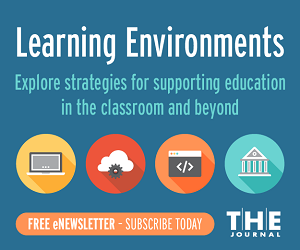The pace of K-12 school districts' spending of ESSER Funds has picked up significantly this school year, and education leaders and researchers have shared tips and guides to help district leaders efficiently evaluate — or re-evaluate — their options when making procurement decisions, to ensure students benefit and stakeholders don't come to see spending decisions as failures.
More
A Funds For Learning E-rate expert shares what K–12 procurement officers and IT leaders need to know so they can be prepared to apply for the expanded funds if and when the FCC decides to expand the E-rate eligible services list — particularly if the expansion plan of choice means that the amount of E-rate funds to cover modern cybersecurity services is limited, at least for the first few years.
More
In the past week, CISA has published alerts on seven known exploited vulnerabilities — two of which put a long list of Apple devices at risk — ordering federal agencies to remediate the identified vulnerabilities immediately and encouraging all organizations to do the same.
More
New research shows that an overwhelming majority of education institutions in the United States have incorrectly configured email security settings and as a result are more susceptible to phishing and spoofing threats.
More
Starting today, plagiarism detection software Turnitin includes new live AI-writing detection features that “identify the use of AI writing tools including ChatGPT, with 98% confidence,” the company said.
More
Ransomware attacks targeting K–12 schools worldwide last year grew at an “absolutely massive” rate of 827% over 2021, according to SonicWall’s 2023 Cyber Threat Report, and the data shows that education customers — those whose data is compromised during ransomware attacks — had the highest percentage reporting ransomware attempts of all sectors studied.
More
Electronic sports, better known as esports, is a massive industry. As of 2022, 532 million people watched video gaming events worldwide.
More
Khan Academy has launched a limited pilot of a new learning guide called Khanmigo for educators, powered by GPT-4, the next-generation of OpenAI's large language model technology, which formally launched today as well.
More
Two prominent education technology-focused associations have teamed up to ask the Federal Communications Commission to extend service delivery dates for the Emergency Connectivity Fund.
More
Test anxiety is a real problem, affecting 25% to 40% of U.S. students. Anxiety, along with academic stress, can appear as physical symptoms (such as headaches, nausea and sleeplessness) and psycho-emotional symptoms (like difficulty concentrating or increased irritability).
More
The adoption of technology could facilitate student learning and social interaction. It could also ease the burdens on educators from staff shortages, according to a new report.
More
A French generative AI ed tech startup called Nolej (pronounced “knowledge”) has quietly launched a new OpenAI-based instructional content generator for educators, called Nolej AI, ahead of its official introduction at BETT in London on March 30 and a planned commercial debut at the ASU+GSV Summit on April 19, the company's chairman told THE Journal.
More
Expanded multi-modal MathGPT Platform possibilities mean any math content or curriculum can be turned into a personalized GPT-powered chatbot with interactive text, audio, and video learning, and GotIt can configure the MathGPT Platform to work with a wide variety of applications in math education, the company said.
More
Two former classroom teachers who have been working on Turnitin’s AI writing detection tool and related features to help educators better understand ChatGPT — and show them teachers how to use AI to save themselves time and how to tweak assignments so that ChatGPT cannot earn a good grade on writing homework — both believe that ChatGPT has presented a growth opportunity — or perhaps more of a growth demand — for writing instruction, which they explained in the March episode of THE Journal Insider podcast.
More
A review of data from more than 225,000 female middle and high school students has revealed a major gap between the aptitude of girls for STEM and their interest in pursuing STEM careers. It also found their interest exceeds aptitude in some non-STEM disciplines.
More
New findings released today indicate a shortage of STEM faculty in high schools and middle schools.
More
Depending on who’s speaking, ChatGPT is projected to either further erode K-12 learning outcomes or it will boost writing instruction and overall learning outcomes when used with appropriate guardrails. Several education technology leaders explained to THE Journal why they fall in the second category and how K-12 education should and can embrace ChatGPT in classrooms.
More
Christopher Kerr, president of the Connecticut Computer Science Teachers Association and a computer and information science teacher, shares his practical tips for engaging students with the exciting world of computer science and supporting them to realize their full potential.
More



